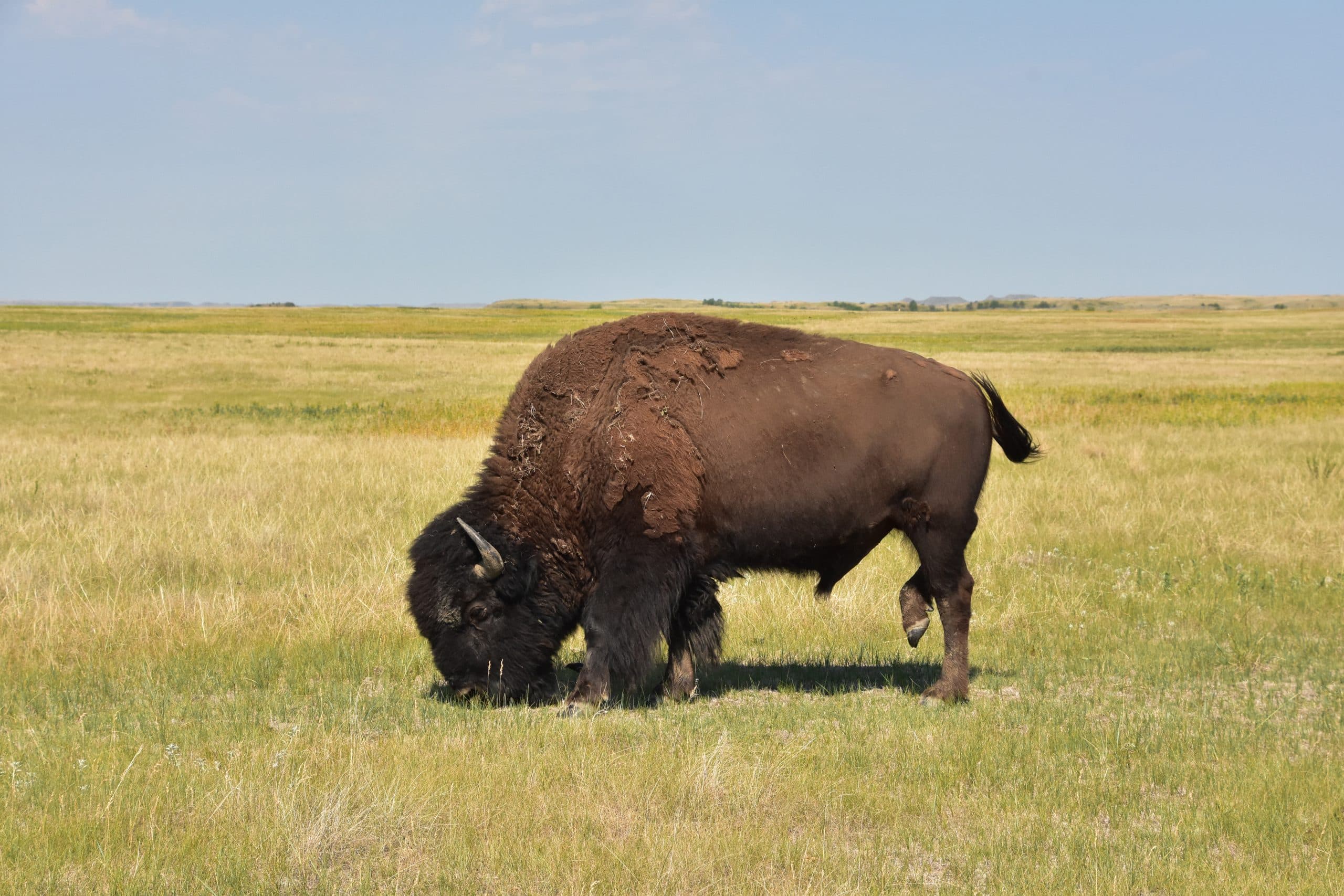One of the most unique attractions in southwest Kansas is the Sandsage Bison Range, located just south of Garden City on Business US 83. This 3670-acre nature preserve is home to more than 100 American Bison that roam the open plains just as they have for thousands of years. The preserve offers tours for interested visitors who wish to get a closer look at these fascinating animals.
If you plan on heading over to the Sandsage Bison Range, it helps to have some idea of what these creatures are all about. This three-part blog series will help get you up to speed about American Bison, so you can get the most out of your experience at the range.
Bison Today
Here in part three of our series on the American Bison, we’ll take a look at the role bison play in modern American society. Part one of this series covered basic knowledge about bison while part two examined bison behavior. Be sure to check those out to further your understanding of this important animal.
Bison as a Symbol
Bison played a key role in the history of the United States, and the animal is often used as a mascot for groups and teams, as well as a symbol for flags, logos, and seals – especially in the great plains. No other animal more effectively captures the spirit of the American heartland and the settling of the American West.
National Bison Day
Since at least 2013, committed politicians and others have worked to establish an official national holiday to recognize and pay homage to this remarkable animal. Currently, the day has been recognized by the US Senate but has yet to be officially established as a national day.
To further these efforts, President Obama signed the National Bison Legacy Act in 2016, which officially established the American Bison as the national mammal of the United States.
Conservation Status
Before 1800, the American Bison population was estimated to be more than 60 million. By 1900, that number had dwindled to just 300 due to excessive hunting by settlers. Despite this brush with extinction, changing habits and conservation efforts have led to a population resurgence. By 2000, bison numbers rose to almost 400,000, spread between captive and wild herds.
Currently, the American Bison is no longer considered an endangered species.
Bison in Native American Culture
Traditionally, Plains Indians depended almost entirely on Bison for their survival, using nearly every part of the animal to support their way of life. They used meat for food, skin for clothing and housing, fur for warmth and insulation, organs for containing food and water, and bones for making tools and weapons.
Out of respect for this important piece of Native American cultural heritage, tribal councils of more than 50 nations throughout the US have worked together to conserve and protect bison herds on Indian reservations.
Bison in the Wild
Currently, all wild bison herds live on protected land throughout the US and Canada. These herds are distinct from the protected, captive herds located at places like Sandsage Bison Range here in Garden City.
Despite living in the wild, very few genetically pure bison exist. Most animals – both captive and free-roaming – contain at least some cow DNA as the species have frequently been bred together throughout history.
A notable exception to this is the bison herd that lives in Yellowstone national park. This herd has lived in the Yellowstone area since prehistoric times and remains one of the few genetically pure bison herds anywhere in the world.
Buffalo Commons
In an attempt to further preserve this symbol of the American West, a coalition of plains states has suggested the development of a “super range” for bison that would spread across ten states. The idea would be to reintroduce captive bison into the wild so they could resume their traditional lifestyle.
This “Buffalo Commons” could provide a safe haven for wild herds while spurring economic development and tourism throughout the midwest. Towns normally forgotten by tourists could become tourism hubs as interested Americans travel to the midwest to try and get a glimpse of bison living in their natural state.
Bison as Livestock
Today, farmers still breed and raise Bison for meat, hides, wool, and dairy products. Bison meat is highly nutritious when compared to other animal products, has more protein and less fat than beef, and is rich in many vitamins and minerals essential for health.
Many bison livestock herds are actually hybrids between bison and cows, known as beefalo or zubron. Interestingly, the offspring of cows and bison are often fertile, which has allowed cow genes to spread easily through bison herds.
Conclusion
This concludes our blog series about the American Bison. If you haven’t already, be sure to check out parts one and two. We hope you have a better appreciation and understanding of this fascinating animal to enhance your experience out at Sandsage Bison Range.
If you’re planning a trip to Garden City, feel free to check out the rest of our site for other great attractions and accommodation available in our city.


